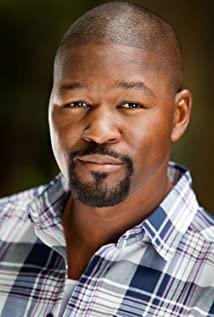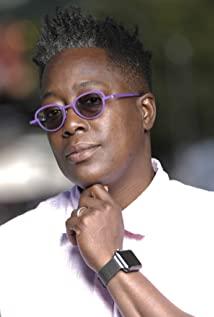This story is about a boy and his dream, not only that, but also a boy from the United States, and his authentic American dream.
The Chinese translation of "Lovecraft Country" (Lovecraft Country) may cause some misunderstandings. If the translation method is not adopted, its translation should be "Lovecraft Country", which was written by the American novelist Matt Lovecraft. The novel published in 2016, "Devil's Land" is adapted from this novel. The series is directed by Misha Green ("Underground Party" and "Spartacus") as the chief producer and screenwriter, with Oscar winner Jordan Peel ("Escape from Death" and "We") and the gold medal producer Produced by JJ Abrams ("Western World" and "Lost"), co-produced by five directors including Daniel Shakheim and David Petrarch ("Game of Thrones").
Lovecraft (1890-1937) is a world-famous master of horror novels. His horror novels have a wild imagination. The myth of Cthulhu is based on his novels and is perfected by countless creators in later generations. However, Lovecraft himself reveals a strong racism tendency in his novels, and has been criticized by many critics for this reason. We were pleasantly surprised to see that more and more ethnic minority creators joined the creation of the Cthulhu mythological system. They did not deny Lovecraft’s achievements, but chose to incorporate his The work was transformed into a weapon against racism, and "Devil's Land" is one of them.
In Hollywood in recent years, a film movement destined to remain in the history of film and television is rising with the Black Lives Matter : Since "Escape from Deadly Town" shined at the 90th Oscars Afterwards, Horror and Thriller films led by black creators are changing the landscape of Hollywood. The new wave of black horror films has a unique aesthetic style, distinctive authorship, and a focus on contemporary social issues, especially racial issues. Sensitivity is the characteristic, which rewrites or even subverts the history of horror/thriller genres . From Jordan Peel’s "Get Out" and "Us" to "Devil's Land", to the upcoming "Antebellum" and the new version of "Candyman" (Candyman) ), horror films and thrillers produced by black people are having more and more extensive and far-reaching influence on the film and television industry and our real life.
This article will be divided into four parts to introduce the themes embodied in Cthulhu mythology and "anti-Romanism", Jim Crow's law and the era of apartheid, the new wave of black horror films, and "Devil's Land". The first two The parts are the theoretical background and historical background of the series, and do not involve the specific content of the series. Readers who have some understanding of related concepts or historical facts can start reading directly from the third part.
The Myth of Cthulhu and "Anti-Romanism"
Howard Phillips Lovecraft was born in 1890 and died of cancer in 1937. Although he died young, his work has completely rewritten the history of horror/weird novels. The famous American writer Stephen King called Lovecraft "the greatest classical horror story writer of the 20th century."
Lovecraft wrote dozens of novels throughout his life. The most well-known works include "The Call of Cthulhu" and "Crazy Mountains". However, until his death, Lovecraft had not officially published any A novel. "The Call of Cthulhu" was published in an American horror fiction magazine in 1926. At that time, Lovecraft and the editor probably couldn't imagine that this short story would have such a profound impact on the history of literature. Cthulhu is one of Lovecraft’s Great Old Ones (Great Old One) and one of the most well-known representative images in Cthulhu mythology. Lovecraft described the image of Cthulhu as follows:
"It portrays a monster with a vaguely human outline, but it has an octopus-like head with numerous tentacles, and its body is like a jelly covered with scales, with huge claws, and a large claw behind it. To the long and narrow wings... it has a bloated and fat body... dripping mucus, the huge green body staggers out of the dark opening, and enters people's field of vision... .... It's like a mountain walking between heaven and earth." ("The Call of Cthulhu")
Although Cthulhu was born in Lovecraft's pen, the mythological system of Cthulhu is not limited to Lovecraft's creation. Lovecraft did not systematically organize the myths he wrote before his life. In a letter written by Lovecraft to J.F. Morton on April 27, 1933, he elaborated on his views on Kesu. Some basic ideas of Lu’s mythological system; after his death, American writer August William Dress (1909-1971) sorted out his system and proposed the "Cthulhu myth" (Cthulhu mythology). Mythos) this concept.
The myth of Cthulhu is not a strictly defined concept, but works called Cthulhu subjects often share some common characteristics: First, there are huge, terrible, unknown monsters in the mythology, and anthropomorphic and terrifying. Valley-style uncanny images are different. Monsters in Cthulhu mythology are often depersonalized . Whether they are external gods or old dominators, their images, thoughts, and emotions are unspeakable to humans. ); Secondly, the Cthulhu mythology system is open, including both the creator and the content of creation. Unlike the classic mythology, the creation of the Cthulhu mythology began in Lovecraft and continues to this day. , The Cthulhu myth system is always in a state of "now perfect tense". At the same time, the content of the Cthulhu myth is not strictly limited. The many monsters that appear in the Cthulhu myth have loose connections and genealogy, but It can not associated with the body in the strict sense; and finally, as one of the most vibrant literary history Lottery Cthulhu mythos, in the last state in which the creators of meaning and historical background and specific literary movement both have a genetic relationship - —At the end of the 19th century and the beginning of the 20th century, with the advancement of physics and astronomy, Lovecraft incorporated many sci-fi elements into the myth of Cthulhu; in the wave of "new mythism" at the end of the 20th century, the creators tried to go back to the pre-Christian In the era of mythological beliefs, “new mythism” with pagan colors was used to fight against colonialism in the West; the “New Weird” movement that emerged in 2000 further enriched the Cthulhu mythology system, and the New Weird movement absorbed The elements in the real world integrate sci-fi/fantasy/horror literature; the new wave of black horror films mentioned above, which will be expanded in detail in the third part, is also contributing to the Cthulhu mythological system.
Lovecraft is an out-and-out racist, this is an accepted fact. The environment in which he grew up is an important soil for his racism—Providence’s xenophobia and the conservative education of the matrilineal family have deeply affected Lovecraft’s thinking; at the same time, we cannot simply take Rockwell’s His racist thoughts are entirely attributable to external factors, because some of his friends have also refuted his racist thoughts, but Lowe ignored them ; when he moved to New York to live in a wave of immigration, he was originally xenophobic He hates and even hates ethnic minorities. According to the letters between him and his friends, we can understand that he discriminates against blacks and against Jews at the same time, and the reasons for discriminating against the two are different-the former is because he is in science. In cognition and common sense, blacks are regarded as inferior races, while the latter is his view of Jews as cultural invaders.
After having a preliminary understanding of the concepts and characteristics of the Cthulhu myth system and Lovecraft’s racist thoughts, we continue to return to the connection between "Devil's Land" and the Cthulhu myth. The original novel "The Land of Lovecraft" is considered a masterpiece of "anti-Romanism." The book review website Goodreads defines anti-Romanism as:
"Those works that consciously try to challenge and subvert the racism, sexism, and conservative right-wing views of the early Cthulhu myths created by Lovecraft."
It can be seen that the anti-Romanian novels are not "anti-Lovecraft" or "anti-Cthulhu", but continue to use this cultural symbol that has swept the world and reinterpret its core. The reason why critics regard anti-Romanism as a literary phenomenon in the literary history of contemporary horror fiction is because the 2015 World Fantasy Awards (the same as the Hugo Award and the Nebula Award) are among the world’s three major fantasy novel awards. ) Due to accusations of racism, the original Lovecraft cartoon bust style trophy style was changed. The initiator of this resolution was Jeff Van der Meer, the original author of "Lost South: Annihilation" ; In 2017, book reviewer Wes House published an article titled "We Can't Ignore HP Lovecraft's White Supremacy" (We Can't Ignore HP Lovecraft's White Supremacy), which confirmed The connotation and significance of anti-Roofcraft, that is, although we cannot erase Lovecraft’s contribution to horror novels, creators of later generations should realize that Lovecraft’s literary creation is based on racist tendencies. The literature and film based on the myth of Cthulhu need to refute racism.
Anti-Romanian literary creations have emerged widely in recent years, including "The Ballad of Black Tom" (The Ballad of Black Tom) and "The Land of Lovecraft" that reflect on racial issues and criticize white supremacy, which explores the awakening of women. "She Walks in Shadows" (She Walks in Shadows) and so on.
Regarding the black life movement and anti-Romanism, the mainstream Chinese Internet seems to maintain a consistent ridicule attitude towards it, even jokingly calling it the "Black Life Movement" movement, believing that the statue will be overthrown, the trophy style will be changed, and HBO will remove "Gone with the Wind" in the short term. Behavior is a flattery to "political correctness," or a kind of "revisionism" that distorts history. But is it true? Anti-Romanian novels and film and television works actually answered this question: whether it is a sculpture of a slave owner, a place named after the slave owner, or a cultural symbol with a strong racist tendency, There is no doubt that it will cause harm to ethnic groups who have been or are being persecuted by racism; although history cannot and will not be erased, the persecuted's reflection and criticism of history (whether mild or sharp) must not be "Political correctness" and "revisionism" simply deny it . On the contrary, before we judge the social actions related to his/her life experience and human nature, we should repeatedly consider whether we have invisible privileges.
So how can you reflect on the privileges you may have? Perhaps the first thing to do is to recognize the cruel history. In the era of "Devil's Land" and Lovecraft, Jim Crow's law and apartheid are unavoidable keywords.
Jim Crow Law and Apartheid
When it comes to segregation, most readers and audiences may not be unfamiliar. The "Green Book", which won the 91st Academy Award for Best Picture, tells the story of the black musician Shirley and his white people in the era of segregation. The friendship story between the driver Tony, the film has received rave reviews, but many North American film critics and ethnic minorities think it is suspected of whitewashing racism. Because of the fact that the persecution of blacks and other minorities caused by the institutional racism embodied in apartheid is immeasurable, the United States still suffers from the pain of racism. "Green Book" accidentally selected the combination of upper-class blacks and lower-class whites. Using the film as a reference, it believed that segregation was not so terrible, and even thought that anti-Roman literature/films criticized segregation. The idea of being persecuted as delusional is undoubtedly biased.
The apartheid policy of the United States needs to start with the Jim Crow Laws. In the "reconstruction era" after the end of the Civil War, that is, in 1865-1877, the federal act provided equal protection of civil rights for all free southerners. However, In the 1870s, with the withdrawal of the federal army, many officials of the former Confederate government in the southern states regained control of the parliament and government organs of the states, and tried to restore and maintain the rule of the slave-owning class ; the states successively enacted the "Black Code" , Depriving blacks of their right to vote, the defeated slave-owning classes in the southern states have successively established the notorious 3K Party, White Knights, White Brotherhood and other organizations to carry out various violent terrorist activities against blacks and black rights supporters. After the country introduced a mandatory apartheid policy with the help of the Jim Crow Law, various private groups such as enterprises, political parties, and trade unions also established their own discrimination clauses, stipulating that blacks are not allowed to buy houses in certain neighborhoods, or work or shop in certain shops. , Are not allowed to work in certain industries, etc.
Until age drama set in 1954, the United States is still practiced segregation, but things have started to change: In 1954, the US Supreme Court in either the 14th Chief Justice Earl Warren headed in "Brown v. Topeka In the case of the Education Bureau (Brown v. Board of Education), a historic judgment was made. Nine justices unanimously agreed that the separation of public facilities by public schools is inherently unequal . This iconic case covers several litigation cases, including the "Gebhardt v. Belton" case in Delaware, the "Briggs v. Elliott" case in South Carolina, and Virginia State "Davis v. Prince Edward County Board of Education" and Washington, D.C., "Thubold Bolling v. Melvin Sharp". These rulings made the country gradually withdraw from the stage of history according to the isolation policy imposed by the Jim Crow Act. Nevertheless, because racism is still deep-rooted, it is common for blacks to be turned away from restaurants and shops, and it is not uncommon for blacks to be lynched and hanged by white supremacists or deliberately shot by the police. Blacks must go on a long journey. With "The Negro Motorist Green-Book" (The Negro Motorist Green-Book), you will be killed if you are not careful.
On December 1, 1955, the civil rights movement fired its first shot : according to Jim Crow’s law, white and black seats were separated on buses. Bus driver James F. Black ordered black women because the white seats were full. Rosa Louise McCauley Parks (1913-2005) gave way to a white passenger, but Parks refused the driver’s request and was arrested by the police. Angry people in support of Parks initiated After the Montgomery bus boycott movement, her civil disobedience action became the fuse of the civil rights movement in the United States in the 1960s and 1970s. Parks later organized activities with civil rights leaders such as Martin Luther King Jr. and the U.S. Congress later referred to her as " The mother of the modern civil rights movement".
With the development of the civil rights movement, on July 2 , 1964, President Johnson signed the historic "Civil Rights Act of 1964." The law invoked commercial clauses to prohibit discriminatory behavior in public places (private restaurants, hotels, shops, and private schools and workplaces). The commercial clauses cited by the bill were supported by the Supreme Court of the United States. On March 7, 1965, there was an unprovoked attack by state police officers on peaceful marchers. These attackers had crossed the Edmund Pettus Bridge in Selma, Alabama, and later came to Montgomery. There was no violent behavior during the parade in the Capitol. This incident made the President and Congress determined to overcome resistance from the South, implement effective voting rights, and enforce legislation, and then the "Voting Rights Act of 1965" was introduced to prohibit the state from voting in all federal, state, and local elections. Obstacles, and the establishment of federal oversight and oversight agencies in counties where voter turnout is likely to be discriminatory, Jim Crow Law officially withdrew from the stage of history.
Although the apartheid policy has ended, the more than a hundred years of Jim Crow law and the era of apartheid have become scars that can never be erased in modern America. Racism is still rampant in the current United States, and the systemic discrimination and even physical discrimination against blacks Violence is not uncommon . On May 25, 2020, the incident of a white police officer kneeling and killing George Floyd shocked the United States, and a new round of black life movement swept the United States once again. Some American scholars pointed out that "apartheid" is far from over. In schools, workplaces, and other social fields, blacks are still at a rather disadvantaged position relative to whites.
In response to this reality, black creators used pen and paper and cameras as weapons to create many popular works that criticized American slavery, the history of apartheid, and the reality of racial inequality. In recent years, the horror/thriller film created by black people has become a school of its own with its unique aesthetic style and attention to racial issues. This is the new wave of black horror films (The New Wave of Black Horror).
Reclamation : A new wave of black horror films
"After "Escape from Death", such as "Before the Civil War" and the upcoming new version of "Candy Man", as well as other similar horror and thriller movies and novels, have become American'cultural exorcism' for centuries. Part of it." (Anthony Breznican)
For centuries, the field of artistic creation in the United States has long been monopolized by whites. It is not difficult for interested audiences to find that there are few horror/thrillers with blacks as the protagonist in the last century, and people of color are often the villains of movies. Even the aesthetic system of the film (including lighting, makeup, etc. that need to be matched to the skin tone) is designed with a white-centric aesthetic. With the unremitting efforts of the civil rights movement and black rights activists, Hollywood began to open its doors to black creators, and a new wave of black horror films began.
Tananarive Due is a professor at the University of California, Los Angeles. She is teaching a course on racism, survival and the aesthetics of black horror films. She has turned the current craze for black horror films into " "Renaissance", Duy believes that films such as "Twelve Years as a Slave", "Selma" and "Harriet" released last year have effectively adapted the real history to film and television; while the supernatural and science fiction And horror/thriller genre films play a slightly different role to help people face America's darkest demons. "Although I do allude to violence in real life," Dui said, " I still hope to use supernatural and terrifying ways to write, because those undead can represent greater structural violence-those that have actually occurred. . Of course, like all the undead, they all want their stories to be told by future generations."
The game changing is the 90th Oscar winner Jordan Peel's "Escape from Death" . This popular film tells the story of white people appropriating black bodies and has become a classic in the history of horror movies. . "I think Jordan Peel deserves these praises because he not only proved that he can attract a wide audience through black horror films, but he can also openly talk about cultural taboo racism as a demon ," Dui said. "More and more people are beginning to realize that this kind of dialogue should have been carried out long ago, especially when the current black life movement is surging. Believe me, black creators are receiving more and more invitations for cooperation. It's almost like Hollywood rediscovered the existence of black people ."
Black horror films are far from new . The documentary "Horror Noire" released last year is adapted from the novel of the same name written by Robin R. Means Coleman, revealing The deeper meaning behind the 100-year history of black horror movies in the United States-from the black horror movies in the silent film era to "Night of the Living Dead" in 1968, the tragic black heroes in the film survived the zombie attack but were ruthless The whites were lynched and killed; the 1972 "Black Prince of Vampires" tells the story of an African prince who was cursed with blood for trying to rebel against the slave owner; released in 1995, by Rasti Kantiyev ( Rusty Cundieff's "Nether Age" tells the story between a corrupt policeman, an unrepentant white supremacist, and a gang killer, revealing the moral dark side of American society. Nowadays, the new wave of black horror movies is based on these heritages and continues to expand its territory. Every black horror movie's upsurge will make Hollywood studios and book publishers more attractive to black creators. Seeking talents and thirsty.
Director Nia DaCosta believes that horror movies usually have a certain natural exaggeration, and therefore, one must be cautious when using horror movies to deal with serious themes . Da Costa reimagined the 1992 classic supernatural horror story "Candy Man" as an exploration of the painful emotions of black people. This new movie connects this feeling of revenge with the current black homicides caused by police violence, the judicial system, and racists-realities that we are all familiar with. Da Costa portrays these events as "grotesque shadow puppets" in the film, abstractly metaphors real events in reality, and maintains a respectful distance between the fictional works and the painful reality.
"All the inspiration for "Candy Man" is lynching. It is the evil lynching that brought the demon of Candy Man to us. This is a very standard way of narrative in horror films," Da Costa said, "but when you want to talk about lynching At the time, you can’t just say “this is just the plot of a horror movie” and stay out of the matter . For my creation, one of the very important points is that you need to be very careful to balance the relationship between human nature, real life and horror genres. ."
In another new movie, "Before the Civil War", Janelle Monáe (Janelle Monáe) plays a contemporary black American woman who inexplicably returns to the pre-Civil War era and re-experiences the nightmare of slavery. Gerard Bush and his partner Christopher Renz co-wrote and directed the film. In an interview , Bush said that "Pre-Civil War" revealed the remnants of the romanticized imagination of the Confederacy. The harm so far . "We deceive ourselves to believe that the name of the haunted house we live in is called'America'-we believe that there are no ghosts here, nor remnants of our original sins," Bush said, "but ghosts are awakened from time to time and become beasts. So we What I want to express through this movie is that we need to recognize and face the demons around us ."
In order to film the southern plantation scene, the two directors reproduced the real shots used in Gone with the Wind, which was released in 1939. Bush called the film "propaganda." "We need to use the same weapons to correct these misleading racist propaganda," Bush said.
Reclamation is a recurring theme in black horror films. "Devil's Land" tells the story of an African-American male named Atticus Black exploring apartheid in the United States in the era of Jim Crow, and racist cults and ancient demons are waiting for him to arrive . The black creators did not directly deny Lovecraft, but chose to transform his work into an anti-racist weapon. What is Reclamation? It can be roughly understood as two meanings: One is the reclamation . When talking about reclamation, the Americans may recall the nightmarish Westward Movement. The expansion of the American border is based on the slaughter of Indians. Basically, land reclamation seems to be synonymous with colonialism and hegemonism, but it is different for black Americans. As a once-named enslaved ethnic group, the "clamation" of blacks is more cultural reclamation, that is, through literary works. Examine and criticize black culture and American racism .
The second is recapture . White supremacy racism has restricted the personal freedom of blacks and even erased the dignity of the black ethnic group. What the blacks want to "retake" is not only the derogated freedom, but also the history and culture that have been destroyed ; and talked about " " Take it back", the then President of the United States also seemed to talk about it- "Take America Back" (Take America Back) was paradoxically from the mouth of an upper-class white man. When the blacks are still in the disadvantaged class of society, what exactly do racists want to recapture?
Many excellent works in the new wave of black horror films try to explain people's doubts: When the United States elects the first black president, does it mean that the United States has entered the so-called "post-equity" era? From 2016 to 2020, there have been more and more gatherings of white supremacist racists and presidents keen to agitate hatred. What does the resurgence of racism mean to black Americans? How did slavery and the apartheid policy under the Jim Crow law affect the current United States? After the first episode of "Devil's Land" was broadcast, we were pleasantly surprised to see it confidently join the new wave of black horror films, and have enough ambition and strength to answer these long-standing questions that have plagued the United States.
Devil's Land and the American Nightmare
The HBO series "Devil's Land" adapted from "The Land of Lovecraft" has 10 episodes and premiered on August 16, 2020. The current freshness of Rotten Tomatoes is 96% (what the film critics watched in advance is The first five episodes of the series), the IMDB score is 7.9, and the first episode score is as high as 8.6. It can be seen that "Devil's Land" will not only be one of HBO's best episodes this year, but it is likely to continue last year's "Watchmen" "The momentum is expected to win many nominations for the Golden Globe and Emmy Awards next year.
"With the heroic performances of Jonathan Majors and Junie Smollett, Misha Green’s "Devil’s Land" is a scrutiny of Lowe’s myth and proves that the old rulers are not people The only demon you will encounter in the universe.” (RottenTomatoes Critics Consensus)
22-year-old Atticus (played by Jonathan Majors) is a veteran of the Korean Peninsula War, and his father Montrose (played by Michael Williams) often disputes whether he wants to go into the family history of his deceased mother. Si believes that the past should be put aside, but Montrose persistently wants to find out how a female ancestor in the family of the dead wife escaped from slavery and gained freedom. His father did not approve of Atticus joining the army, thinking that he "should not work for a country that kills blacks." Atticus was mild-tempered and was a fan of Lovecraft, although Lowcraft's books often showed racist tendencies. , He will also say to critics, "We can't just see his shortcomings."
One day, Atticus heard that his father had left the residence with a strange white man and disappeared. His father, who has always hated whites, would leave with whites. Atticus was surprised and speculated that it was related to the family history that his father had studied for many years and finally made a breakthrough. So he and Uncle George (Courney Vance) and his friend Ledi Xia (Juni Smollett) went to the place where his mother’s ancestors lived when they were black slaves: a small village in Massachusetts. The name of this village is the only one of Lovecraft’s Arkham, where the evil god appeared. The difference between words-Adem. The long road is full of dangers. In addition to avoiding the pursuit of racists and white police, they will also face supernatural terrorist forces.
The adaptation of the drama version of "Devil's Land" to the novel is undoubtedly successful, even better than the novel. The first three minutes of the first episode outlines Atticus’s dream with quite experimental pictures and sounds, which blurs the text-image boundary: the authentic black and white picture, the picture fades to color when the bomber drops the bomb, a magnificent picture And a terrifying picture is presented before the audience-winged octopuses are flying in the sky, spider-like mechanical monsters are spitting fire on the ground, the earth is burning and smoke is everywhere, and a red-skinned alien ship appears in the sky. The princess landed on the ground, suddenly the huge Cthulhu appeared, and the black youth wearing a baseball cap defeated it; and the background sound was the voice of the old radio: "This story is about a boy and his Dream, not only that, but also a boy from the United States, and his authentic American dream."
In fact, as the main point of view of the film, Atticus's dream refers to his "American dream" as a black boy. When talking about the American dream, people often imagine it as a handsome blond white American. , Sunny lawn, confident smile on his face. The "American Dream" of Atticus, who loves the myth of Cthulhu, is even darker: post-war traumatic stress syndrome, fear of the unknown, and confusion from underground to ground. In fact, it is people's romanticization of oppression that whitewash the ubiquitous racism, and the "American dream" of whites may be exactly the American nightmare of blacks. The speech of the famous American writer James Baldwin (1924-1987) inserted in the first episode corroborates this metaphor:
"I agree with Mr. Bedford that the oppressed black Americans are obstructing the American Dream, which is true. But I don’t agree with his other claims. The underlying reason for my discomfort is related to people’s perception of the reality system. I think This motion is the American dream achieved at the expense of the black Americans, or the American dream at the expense of the black Americans. This is a contemptible question. Our response to this question, or our response to this question, has to be It depends on our self-positioning in the world, your awareness of reality, and the reality system you are in, that is, it depends on the unperceivable assumptions hidden deep in your heart. A white South African, a Mississippi tenant, or A Mississippi sheriff, or a Frenchman who was expelled from Algeria, deep in his heart, a set of real-life system of bean friends forced them. For example, the Frenchman who was expelled from Algeria was used as an example to justify the French rule of Algeria. Like a sheriff in Mississippi or Alabama, when he confronts a black boy or girl, he really thinks in his heart that these children must be crazy when they attack the reality system that defines their identity.” (James Baldwin)
From today’s point of view, James Baldwin’s words seem ambiguous and unclear. What he wants to express is that because of the unreasonable system, people will have an instinctive hostility towards blacks and believe that blacks who try to change the reality are radical. And crazy. But why does this passage need to be expressed so tortuously? Because this is not an option . In the pre-civil rights era, blacks were completely unable to compete with whites in terms of political power. Only through such "moderate" words can Baldwin be accepted by mainstream white society. When the episode was inserted by Baldwin’s words, behind the black people who lined up on the street for relief was a wall with white people sitting in a private car traveling posters, and it said: “The world’s highest quality of life is the highest in the world. A better way for America."
Back to the series, the first episode of "Devil's Land" has two exciting chase scenes. The first part is a crazy white supremacist holding a gun and trying to kill Atticus and his party. Thanks to Letty Xia escaped the danger. ; The second paragraph is a notorious sheriff who made things difficult for Atticus and his party and tried to lynch them on unreasonable charges. At this time, the terrifying monsters in the forest attacked them, and Atticus, Laetitia and Uncle George escaped. After a while, the three arrived in Adem at the beginning of the day. What they saw was a luxurious castle. The people in the castle said to Atticus "Welcome home", but what kind of conspiracy was hidden in this castle. We still don't know.
As a result, "Devil's Land" once again confirmed its anti-Luo doctrine theme and the characteristics of the new wave of black horror films-Atticus, who is keen on Lovecraft's novels, will personally experience the monsters and racism in the myth of Cthulhu Threatened, he will follow his father to find family secrets and re-recognize his position in reality. This journey itself can be used as a sign of reclaimation: to reclaim the family heritage of black people in the racist America. Similarly, this trip will redefine the "American Dream" and become a highlight in the Cthulhu mythological system, because we must not forget that Rockwell's American Dream has always been a black American nightmare.
【Reference Materials】
[1] Zhelu, the ugly guest. Race, equality, and the myth of Cthulhu: Talking about the rise of anti-Romanism. 2020-6-7.
[2] Gao Shan. Research on Cthulhu Mythology in Movies [D]. China Film Art Research Center, 2019.
[3]Anthony Breznican.Black Storytellers Are Using Horror to Battle Hate.2020-8-3.
[4] Jim Crow Laws Wikipedia.
[5] Rosa Parks Wikipedia
View more about Lovecraft Country reviews











